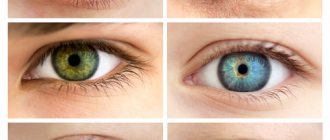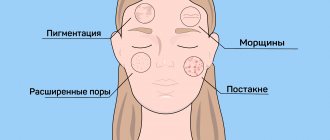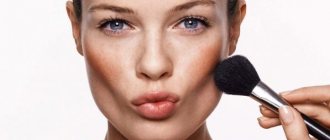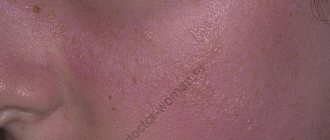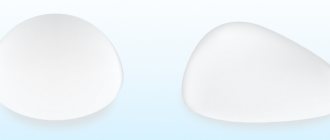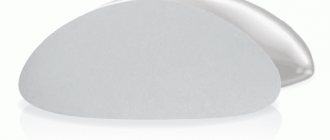Women's breasts have always been a subject of great interest to men. Why is that? There are many possible answers to this question, but we will not go into details. But one cannot help but admit the fact that a woman’s breasts are truly beautiful, no matter what their shape and size.
All girls are different. You won't find two ladies in the world with exactly the same breasts. Moreover, almost all women have two breasts of different sizes - for some it is practically not noticeable, but for others it is seriously complex about this. But if you belong to the fair half of humanity, just believe me: you don’t have to worry about this at all.
And the most interesting thing about a woman’s breasts from a male point of view is the areola. Here nature made a noticeable effort and did not offend the girls with its variety - nipples come in different sizes and types, the general classification of which we will consider later in the article.
Anatomy of nipples in women and their functions
In women, the nipple is located just below the middle section of the mammary gland on the line of the 5th rib, or in the area of the 4th intercostal space. In women who have previously given birth, the nipple has a cylindrical shape, and in nulliparous women it resembles a cone in appearance.
The following anatomical features of female nipples are distinguished:
- areola with a diameter of 3 to 5 cm;
- the milk canal through which mother’s milk flows from the nipple during the lactation period of a newborn baby;
- fatty tissue located inside the mammary gland under the nipple;
- skin covering.
In the areola there is a small number of mammary glands, which have rudimentary features. These anatomical elements of the breast form elevations on the surface of the nipple. These rudimentary tubercles are called Montgomery glands. The skin of the female nipple is covered with multiple wrinkles, and in its upper part there are milk pores.
The table below details the physiological functions of female nipples:
| Functions of a woman's nipple | Characteristics of physiological processes |
| Sexual arousal | During sexual intercourse, as well as during ovulation, nipple erectility increases due to a sharp contraction of its muscle fibers. The occurrence of this physiological reaction is not associated with increased local blood circulation. At the moment of sexual arousal, female nipples acquire an elongated cone-shaped shape. |
| Lactation | Delivering breast milk to the baby is the main function of female nipples. The secretion of mother's milk occurs throughout the entire lactation period of the newborn. |
| Restoration of internal genital organs | The sensitive muscles of the nipples are directly involved in the process of restoration of the female reproductive system after the birth of a child. When a newborn suckles, the hormone oxytocin enters the mother's bloodstream. This is a biologically active substance that promotes rapid contraction of the uterus in the first hours after childbirth. Regular stimulation of the mother's nipples by the child provides the effect of compression of the uterine arteries, which minimizes the risk of postpartum hemorrhage. |
After the completion of the lactation period, a woman's breasts gradually decrease in size. The areola becomes lighter in color, the nipples become less voluminous, and their length is reduced.
Seaweed wrap
Is it possible to reduce nipples after childbirth? The answer is yes. Nutritional wraps are very effective for this purpose. They will allow you to prevent stretching of the areolas even at the stage of pregnancy.
The most popular and effective procedure is the use of seaweed for wrapping. To do this, soak 100 grams of kelp leaves for half an hour in a liter of warm water (up to 65 degrees). If soaked in water at room temperature, it will take 2 hours. We put the seaweed on the chest, cover it with film and a warm down scarf or wool blanket for 30 minutes. Without insulation, it takes about an hour to keep the algae on your chest.
Appearance
Types of nipples in women are classified according to color, shape, and distinctive features of the areola.
Shade of nipples and areola
The pigmentation of the nipple and its areola changes depending on the woman’s hormonal background, skin tone and hair color. During pregnancy, as the fetus develops, the areola acquires a rich brown color. After the birth of a child, the physiological process of gradual lightening of the nipple areola begins.
In girls with dark skin and black hair, the nipple circles are initially distinguished by a darker shade. In women with white, blond or red hair and fair skin, the areola is naturally light red in color. The biochemical substances of the female body are responsible for the shade of the areola - eumelanin (rich brown color) and pheomelanin (causes the areola to turn red).
What kind of areola is there, what does the size depend on?
The areola is the pigmented area of the breast that is located around the nipple.
The size of this part of the breast depends on the following factors:
- state of pregnancy and period of fetal development;
- phase of the menstrual cycle;
- hormonal changes caused by diseases of the endocrine and reproductive systems;
- period of natural aging of the body;
- breastfeeding of a newborn baby;
- long-term therapy with medications that contain natural or synthetic hormones;
- hereditary predisposition (the size of the areola is transmitted along with genetic information from mother to daughter).
The average diameter of the areola in women is within 3 cm. In some girls, the size of the areola can be more than 10 cm. The presence of these parameters of the mammary gland is not a pathology. The size of the areola increases sharply with the start of breastfeeding. In most women, the isola has a regular round shape. In rare cases, an ellipse-shaped areola is found.
Aroma oils
Another equally good way to help reduce nipple size is the use of aromatic oils. The most obvious results can be achieved with a mixture of jojoba oils - 25 ml, and grape (seed) oils - 5 ml. You just need to rub the product into the skin. With constant use, this will help not only reduce the size of the nipples, but also remove stretch marks, as well as remove age spots. Rose oil provides similar benefits if used daily or alternately with the previous mixture. The main thing is that there is no individual intolerance to the drug.
Types and shapes of nipples
The types of nipples in women differ in the shape and color pigmentation of the epithelial tissues. This part of the mammary gland may be more convex, plump, lumpy, completely flat, retracted into the chest.
Convex
Nipples of this type are also called “protruding”, and their distinctive feature is that they protrude several millimeters above the general level of the areola. At the moment of sexual arousal, under the influence of flows of too hot or cold air, the convex areolas become even more noticeable.
Flat
Completely flat nipples occur in 60% of women. This area of the breast does not protrude above the general level of the areola and does not react in any way to sexual arousal.
The presence of such a physiological reaction of the body, the inaction of the chest muscle fibers in response to external and internal stimuli is not considered a pathology.
plump
Conical or puffy nipples also protrude above the general level of the skin. A distinctive feature of nipples of this shape is that they sharply increase in volume before the onset of menstruation. At the end of menstruation, the nipples gradually decrease and their previous shape is restored. For 2-3 days and during menstruation, touching the areola of the nipple may cause pain.
Retracted
Inverted nipples can simultaneously be a sign of pathology, or an individual feature of the structure of the female mammary gland. If a girl has this nipple shape from birth, then this is considered normal.
The following distinctive features of inverted nipples are distinguished:
- The nipple itself and its areola are located below the level of the skin;
- at the moment of sexual arousal, the nipple increases in volume, rising above the mammary gland;
- During the period of ovulation, the nipples cease to be retracted, becoming more noticeable in size.
The sudden appearance of inverted nipples at a certain stage of life, or a change in their appearance during adolescence after puberty, is a symptom of an endocrine disease or an imbalance of female sex hormones. In such a situation, it is necessary to undergo examination by a mammologist and endocrinologist.
Scalene (unilateral)
Versatile nipples are also considered a sign of normality, but only if the girl has this form of mammary gland from birth.
The appearance of one-sided nipples in adulthood or immediately after puberty may indicate the development of the following pathologies:
- mastopathy;
- fibroadenoma:
- mammary cancer;
- lipoma;
- intraductal papilloma;
- mastitis.
The appearance of a versatile nipple shape, which is accompanied by pain in the chest area, discharge of blood or ichor from the milk duct, requires immediate medical attention from a mammologist or gynecologist.
Lumpy
The types of nipples in women differ in shape, color, and areola diameter. Lumpy nipples are found in girls with strongly pronounced Montgomery glands. Externally, this part of the breast is distinguished by a large number of small pimply elevations, which are located directly on the nipple itself, as well as on the surface of the entire areola. Too dense arrangement of Montgomery glands is not a sign of pathological breast development, nor does it indicate the possible presence of a disease.
With hairs
Hairy nipples are also called fluffy nipples. Depending on the hormonal background of the female body, there can be from 1-3 to several dozen hairs within the areola.
Nipples in women
The occurrence of this physiological feature is due to the fact that the girl’s blood contains a high concentration of male sex hormones. Hair follicles are found in the tissues of the areola of the nipple. The rapid growth of hair on the mammary gland is activated as the concentration of male sex hormones increases.
The appearance of such symptoms is caused by the following causative factors:
- polycystic ovary syndrome;
- long-term use of oral contraceptives;
- therapy with medications that contain synthetic hormones;
- taking steroids and hormonal-based sports nutrition products.
Hair growing within the areola, as well as on the surface of the nipple, is a cosmetic problem. Regular removal of these hairs allows the breasts to return to their previous appearance. The appearance of such a symptom requires a comprehensive examination by an endocrinologist. Especially if hair growth within the areola is accompanied by sudden mood swings, nagging pain in the lower abdomen, and tearfulness.
Third nipple
The appearance of a third nipple is a developmental anomaly of the mammary gland, which is congenital in nature. Such a defect can be transmitted along the maternal line along with genetic information. In most cases, the third nipple is located near the areola or under the breast. Externally, this formation resembles a mole with a diameter of 2-3 mm. The third nipple does not increase in size, does not cause pain or severe discomfort, and does not itch.
Nipple direction
Types of nipples in women are classified according to the direction of their location, namely:
- erect;
- lowered;
- looking in different directions;
- directed inward;
- raised up.
Each direction of the nipples is characteristic of breasts of a certain shape. This information is detailed in the table below.
| Breast shape | Nipple direction |
| Round | For round-shaped mammary glands, it is typical to have erect nipples that rise slightly above the general level of the skin. |
| East-west | East-west breasts are characterized by the presence of nipples that point in different directions. The mammary gland itself looks like an eggplant. The breasts extend from the center towards the right and left sides. |
| Tilted to one side | Women with breasts that slope to one side have nipples that are erect or point inward. The fit of such breasts is wider, and their volumes are larger than average. |
| A tear | The tear-type mammary gland is characterized by the presence of nipples, the tips of which are directed downward. In most cases, these breasts have a saggy shape and are characterized by low elasticity of the glandular tissue. Similar changes in the structure of the mammary gland occur in women who have suddenly lost weight and breastfed their child for a long period of time. A low level of physical activity and excessive thinness also contribute to rapid sagging of the breasts with a change in the direction of the nipples and their downward position. |
| Slender | The “slender” type of mammary gland is characterized by the presence of erect or raised nipples. This type of breast is characterized by a slender and neat upper part, as well as a lush volume below. |
| Bell | Bell-shaped breasts are characterized by a large volume of glandular tissue, as well as downward-pointing nipples. At the same time, the mammary gland itself is quite elastic, and its tissues maintain a normal level of elasticity. There are completely no signs of sagging. |
| Asymmetrical | Women with asymmetrical breasts have one breast slightly larger than the other. In this case, the girl can have nipples in any direction. |
| Cone | Cone-type breasts are small in size and have erect nipples. The mammary gland of this species is cone-shaped, very elastic and elastic. Breasts of this type are most often found in thin girls who are not prone to obesity. |
| Relaxed | The “relaxed” type of breast is characterized by the presence of nipples pointing downward. This type of breast may have signs of sagging, sagging and low elasticity. |
| Athletic | The athletic breast type is found in women who regularly play sports and have a toned and muscular body. The mammary gland of this species has nipples pointing upward and is also small in size. |
Under the influence of the natural aging process, due to changes in hormonal levels, the shape of the breast and the direction of the nipples may change. A sharp enlargement of one breast is a sign of pathology, which requires consultation with a mammologist.
Methods for correcting the shape of nipples
There are several ways to correct abnormal nipple shape, which has a congenital or acquired etiology.
Correction for hollowness
Sagging nipples can occur as a result of breast disease, age-related changes associated with loss of tissue elasticity. In this case, a surgical method is used to correct deformation changes in tissue in the areola area.
Restoring the normal shape of sunken nipples is carried out according to the following algorithm of actions:
- A woman is admitted to the plastic surgery department.
- At the appointed date and time, the patient is transported to the sterile conditions of the operating room.
- The anesthesiologist administers general anesthesia to the girl.
- Antiseptic treatment of the surface of the nipple and isola is carried out.
- The plastic surgeon makes an incision into the epithelial tissue at the lower base of the nipple.
- Using surgical instruments, the doctor tightens the nipples and areola, and also crosses the ducts that draw them into the mammary gland.
- Sanitation of damaged tissues is performed to prevent bleeding.
- The surgeon sutures the operated area of the chest.
- The patient is transferred to the intensive care unit for 1 day in case of postoperative complications.
- 24 hours after surgery, the woman is admitted to the general ward, where she undergoes further recovery.
On days 5-6 after the operation, the surgeon may decide to remove the sutures from the patient’s operated nipples. After removing the suture material, the doctor conducts a control examination of the girl’s breasts and evaluates the result of the operation. To prevent an infectious-inflammatory process, the patient is prescribed antiseptic drugs for external treatment of the operated tissues.
Correction for bulge
Nipples that are too prominent can also be corrected through surgery.
In this case, the following treatment tactics are used:
- A woman who is an inpatient at the plastic surgery department is transferred to the sterile conditions of the operating room.
- The anesthesiologist administers general intravenous or epidural anesthesia to the patient, depending on medical indications.
- Antiseptic treatment of the skin of the breast, areola and nipple is carried out.
- The surgeon makes a circular incision at a distance of 5 mm below the base of the nipple.
- The doctor makes another 1 circular incision 1 mm below the top of the nipple.
- The skin that is located between the dissected areas of tissue must be removed.
- The milk ducts are inserted into the base of the nipple, the functions of which are fully preserved upon completion of postoperative breast reconstruction.
- After excision of excess tissue, the surgeon applies suture material.
Immediately after completion of the operation, it is visually noticeable that the nipple of the mammary gland has noticeably decreased in size. This surgical correction is indicated for women whose nipples are too prominent and create not only aesthetic discomfort, but are also subject to too frequent injury. The average time for complete postoperative recovery varies from 2 to 3 weeks, depending on the individual characteristics of the female body.
With an unclear outline
The appearance of a fuzzy nipple contour occurs in women with signs of hypertrophic changes in the mammary gland.
If such symptoms are present, surgical breast correction is indicated, which is performed as follows:
- The woman is routinely hospitalized in the inpatient plastic surgery department.
- At the appointed date and time, the patient is transferred to the operating room.
- The anesthesiologist administers general anesthesia to the girl.
- Before the start of surgery, antiseptic treatment of the nipple, isola and circumferential surface of the breast is carried out.
- Using surgical instruments, the doctor makes a circular incision of the areola, maintaining the correct shape of the circle.
- The doctor removes part of the skin of the areola in a circle, forming a physiologically correct contour of the nipple.
- A continuous intradermal suture is placed over the entire area of the truncated areola.
As a result of these surgical manipulations, the contour of the nipple becomes fully defined, with no signs of deformation or irregularities. After 7-10 days, the suture material is removed. The average postoperative rehabilitation period ranges from 14 to 20 days.
During this period, the woman must carry out daily antiseptic treatment of the operated tissues. If signs of an inflammatory process appear, a course of antibacterial and anti-inflammatory therapy is prescribed.
Female nipples differ in shape and appearance, color and areola diameter. In girls with dark skin and naturally dark hair, this part of the mammary gland has a rich brown tint. In women with white skin, light brown, red or white hair, the isola is red or pink.
According to their shape, female nipples are classified into puffy, completely flat, convex, and tuberous. There are cases when this part of the chest is covered with many small hairs. The appearance of such symptoms indicates changes in a woman’s hormonal levels towards an increase in testosterone. Correction of the shape of the nipples is carried out using a surgical operation, which is possible only in the absence of medical contraindications.
Expert opinion
- Cosmetologist
- Surgeon
Michelle Ellern
practicing cosmetologist-dermatologist
With surgical correction, there is a risk of scarring and loss of sensation, since there is a high probability of damage to the nerve endings. Therefore, it is very important that a woman, when deciding to have an operation, knows about all its likely consequences and can weigh all the pros and cons.
Theda Contis
plastic surgeon
Before surgery, you should undergo a thorough examination. The fact is that it is important to identify all contraindications. It all depends on the characteristics of a particular patient. If a woman plans to breastfeed her baby in the future, then the doctor will try not to affect the connective tissues.
https://youtu.be/v_zAR3gqCgk
The beauty of a woman's breasts is largely determined by shape and color, of which there are many types. Not all of them are ideal, but today almost any defect in appearance can be corrected or minimized with the help of doctors and cosmetologists.
At the same time, it is important to weigh the pros and cons and understand that in many respects the condition of the breasts and nipples depends on the degree of intensity of care for them, as well as the woman’s lifestyle.

